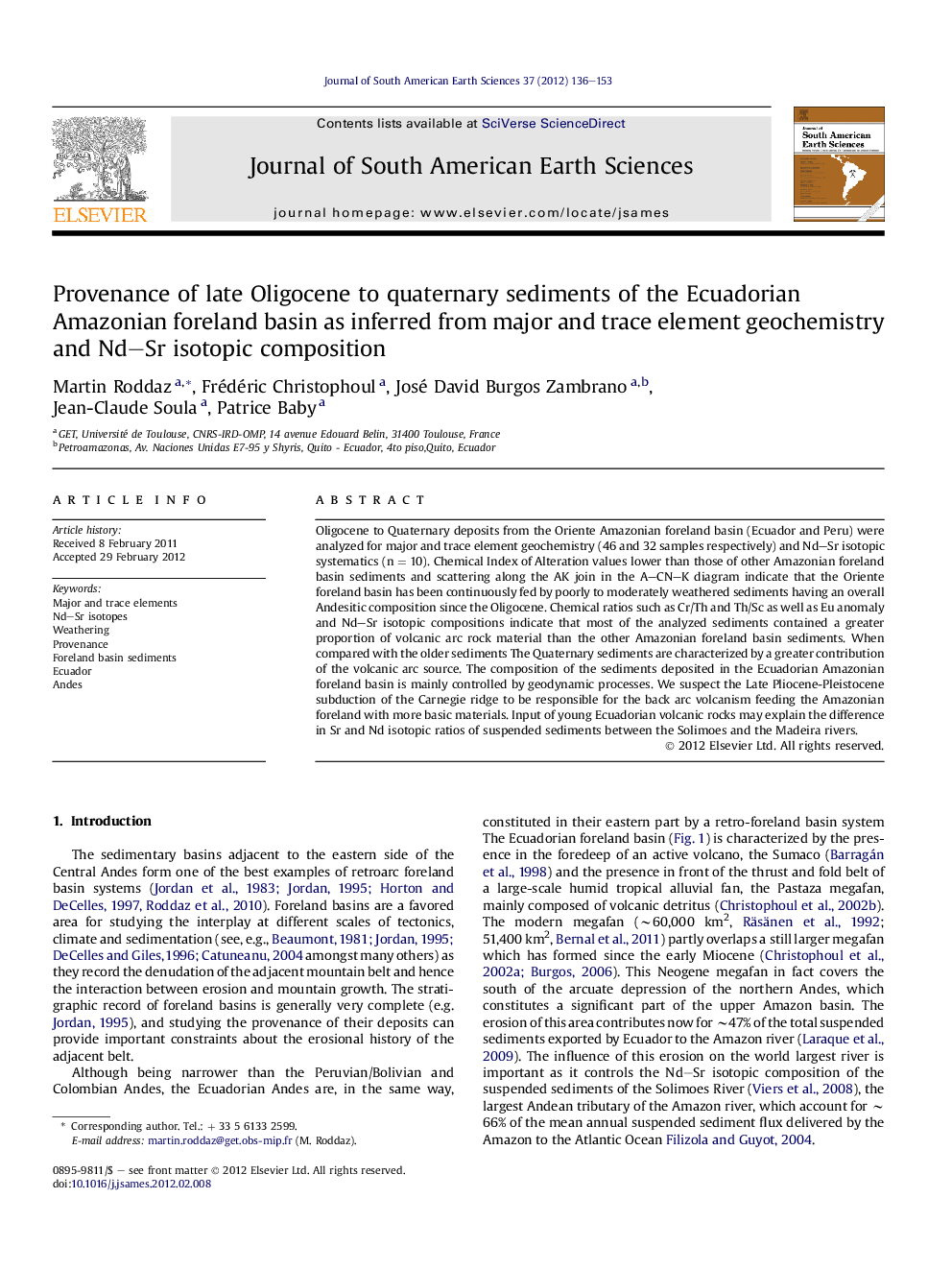| Article ID | Journal | Published Year | Pages | File Type |
|---|---|---|---|---|
| 4682546 | Journal of South American Earth Sciences | 2012 | 18 Pages |
Oligocene to Quaternary deposits from the Oriente Amazonian foreland basin (Ecuador and Peru) were analyzed for major and trace element geochemistry (46 and 32 samples respectively) and Nd–Sr isotopic systematics (n = 10). Chemical Index of Alteration values lower than those of other Amazonian foreland basin sediments and scattering along the AK join in the A–CN–K diagram indicate that the Oriente foreland basin has been continuously fed by poorly to moderately weathered sediments having an overall Andesitic composition since the Oligocene. Chemical ratios such as Cr/Th and Th/Sc as well as Eu anomaly and Nd–Sr isotopic compositions indicate that most of the analyzed sediments contained a greater proportion of volcanic arc rock material than the other Amazonian foreland basin sediments. When compared with the older sediments The Quaternary sediments are characterized by a greater contribution of the volcanic arc source. The composition of the sediments deposited in the Ecuadorian Amazonian foreland basin is mainly controlled by geodynamic processes. We suspect the Late Pliocene-Pleistocene subduction of the Carnegie ridge to be responsible for the back arc volcanism feeding the Amazonian foreland with more basic materials. Input of young Ecuadorian volcanic rocks may explain the difference in Sr and Nd isotopic ratios of suspended sediments between the Solimoes and the Madeira rivers.
► We analyze the provenance of Oriente deposits (geochemistry and Nd–Sr isotopes). ► Most of them are characterized by a great proportion of volcanic material. ► Supply of volcanic material strongly increases since the late Pliocene. ► Flattening of the slab due to Carnegie ridge subduction explains this increase.
